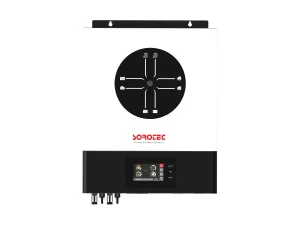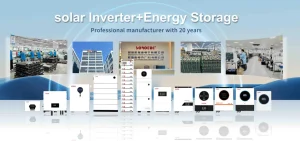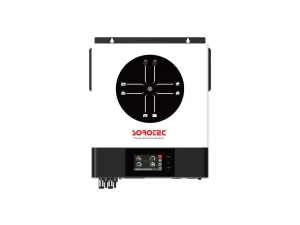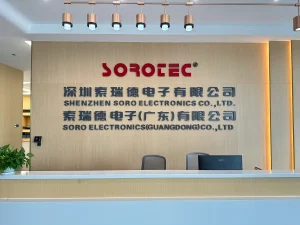
This comprehensive guide examines the key factors impacting commercial solar system performance, including panel efficiency (with monocrystalline silicon offering over 20% efficiency), geographic location considerations, proper system sizing, and maintenance requirements. It highlights Sorotec’s advanced solar technologies, like their REVO series inverters featuring MPPT optimization, intelligent load management, and IP65-rated durability for harsh environments. The article provides practical energy output calculations and emphasizes how Sorotec’s scalable, smart energy solutions (including WiFi monitoring capabilities) help businesses maximize ROI through efficient power conversion, adaptable configurations, and long-term reliability. Best practices for system design, performance monitoring, and component upgrades are also covered to ensure optimal energy generation.
Key Factors Influencing the Energy Output of Commercial Solar Systems
How Does Solar Panel Efficiency Affect Energy Generation?
The effectiveness of a panel plays a crucial role in converting sunlight into usable electricity efficiently. High efficiency panels can generate energy per square meter and are especially beneficial in locations with limited space for installation. Recent progress in photovoltaic technology has increased efficiency rates to over 20%, resulting in systems that can produce power even in less-than-optimal conditions. For example, monocrystalline silicon panels are recognized for their efficiency when compared to polycrystalline options. Investment in efficient solar panels can greatly boost the energy production of your commercial solar power system.
Why Is Geographic Location and Sunlight Availability Crucial?
The location of a place is crucial in deciding how much energy a solar system can generate effectively. In areas near the equator, the sunlight is more constant and stronger all year round, resulting in energy production. Other elements, like shadows from buildings or natural surroundings, can lessen sunlight exposure. Affect the performance of the system. By evaluating the irradiance levels at your site with tools such as solar maps or on-site measurements, you can better estimate the potential energy output of the system.
What Role Does System Size Play in Energy Production?
The capacity of your power system for businesses is linked to its ability to produce energy efficiently. The larger the system with panels you have installed, the more sunlight it can capture, resulting in a greater electricity output. However, it’s crucial to strike a balance between your energy consumption requirements, the space available, for installation, and your budget constraints when determining the system size. Oversizing may lead to capacity during periods of low demand, while undersizing could cause an inadequate power supply.
How Important Is Proper Installation and Maintenance?
Even the best solar setups need setup and regular upkeep to work at their best level of performance efficiently long term! If the system isn’t aligned right, the tilt angles are off kilter, it can really cut down on how much energy’s captured. Not good news! Also, if dirt piles up on the panels, it can get in the way of soaking up all that sunlight we need for power. To keep everything running smoothly and make sure every part is working its best for as long as possible regular checks and a bit of cleaning here and there are key to getting the most out of your investment in solar power.
Performance Insights into Sorotec Commercial Solar Products
What Sets Sorotec’s Advanced Solar Panel Technologies Apart?
Since 2006, Sorotec has positioned itself as a player in power electronics and renewable energy sectors, providing a wide array of products tailored for on-grid and off-grid usage scenarios with a notable focus on incorporating state-of-the-art technologies in their solar offerings, showcasing innovation in the field.
- REVO VM II PRO: This model supports lithium battery communication via RS485 and CAN ports while offering WiFi remote monitoring options. With a maximum solar charging current of 120A (for 4/6 kW models), it ensures robust energy capture capabilities.
- REVO HMT: Equipped with intelligent load management and capable of parallel operation for three-phase output, this inverter is ideal for large-scale commercial setups.
These characteristics not only improve how things work, but also offer versatility for various usage situations.

How Do Their Inverters Optimize Power Conversion?
Effective power conversion is crucial for reducing losses when converting from DC to AC power supply systems are critical and essential in applications. Sorotec utilizes MPPT (Maximum Power Point Tracking) technology in their inverters to optimize energy extraction from solar panels. Furthermore, functionalities such as output intelligent load management provide users with the ability to prioritize important loads during peak demand times. By maintaining conversion efficiencies under changing environmental conditions, these inverters guarantee reliable and consistent performance throughout diverse situations.
Calculating the Potential Energy Output of a Commercial Solar System
What Are Standard Methods for Estimating Solar Power Generation?
When calculating the expected energy yield of a system for business use, several factors need to be taken into account.
- Solar Irradiance: Measured in kilowatt-hours per square meter (kWh/m²), this metric indicates the amount of sunlight available at your location.
- System Efficiency: Includes panel efficiency, inverter performance, and other losses due to wiring or shading.
- Panel Orientation: Optimal tilt angles depend on geographic latitude; adjustments may be necessary for seasonal variations.
- Operational Hours: The number of sunlight hours directly impacts daily production rates.
To estimate the amount of energy produced on a yearly basis, simply multiply factors such as sunlight intensity, solar panel size, efficiency, and hours of sunlight together.
Can Real-World Examples Illustrate These Calculations?
Imagine a situation where a company sets up a 50 kW power system using high-performance panels with a rating of 20%. If the area they are in gets 5 kWh/m²/day of sunlight on average for 300 days every year.
- Daily Output= 50 kW × 5 kWh/m² × 0.20 = 50 kWh
- Annual Output= Daily Output × Days = 50 kWh × 300 = 15,000 kWh/year
Businesses that choose solutions like Sorotecs REVO HES series, which include features like IP65 protection and grid-connected capabilities, often experience performance in practice than what was initially expected thanks to well-thought-out design enhancements.
Uncover the effectiveness of Sorotec items in achieving outcomes.
Advantages of Using Sorotec for Commercial Solar Installations
Why Are Sorotec Products Known for Their Durability and Longevity?
Installing panels for commercial use requires durable equipment that can maintain performance over time reliably and consistently withstand various environmental conditions globally and domestically. The companys products excel in durability thanks to their strict adherence to testing standards at both local and global levels. These solutions are crafted with top notch materials to endure harsh climates and terrains. For example, the REVO HES models are equipped with IP65 protection ratings ensuring resistance, against dust and water infiltration. This extended lifespan not just cuts down on upkeep expenses. Also boosts the overall return on investment throughout the system’s lifespan.
How Does Scalability Meet Diverse Business Needs?
In the business world, each company has its energy needs that change over time. The flexible construction of these solutions makes it easy to scale up as needed without having to redo everything from scratch. For instance, items like the REVO HMT allow you to run up to six devices simultaneously with options, for both single-phase and three-phase outputs. Such flexibility helps businesses meet their increasing energy requirements while ensuring their operations.
What Role Does Smart Energy Management Play?
It’s really important to combine systems with smart energy management to make the most of power consumption efficiency. These systems come with high-tech functions such as WiFi monitoring and smart load control. For instance, the REVO VM IV model enables users to focus on loads during peak times by using dual output intelligent load management. These features help ensure that energy is used effectively, cutting down waste and lowering electricity expenses overall.
Delve into the ways in which advanced technologies elevate the effectiveness of business setups.
Recommendations for Maximizing Energy Generation with Sorotec Solutions
What Are the Best Practices for System Design and Configuration?
Starting the design process for the system requires evaluating your location’s unique factors, like sunlight levels and shading patterns, along with the direction it faces on the map. Choosing notch solar panels combined with advanced inverters can greatly enhance energy production levels. For instance, products such as REVO VM II PRO come equipped with Maximum Power Point Tracking (MPPT) technology that enhances the efficiency of converting solar energy into electricity. Moreover, adjusting the tilt angles according to your latitude guarantees sunlight absorption all year round.
Why Is Monitoring and Upgrading Components Over Time Essential?
Robust systems need check-ups to keep them running at their best performance levels Monitoring tools built into these systems give real-time updates on energy production and overall system condition. For example, the REVO HMT product lets users see power generation statistics on an annual monthly and daily basis. Upgrading components, like batteries or inverters regularly helps them stay current with advancing technologies and improves efficiency even more.
FAQs:
Q1. How do smart features improve solar system efficiency?
A: Smart features offer advantages to solar systems by enhancing energy efficiency through functions such as remote monitoring and intelligent load management, enabling real-time control over power distribution.
Q2. What should I consider when expanding my solar system?
A: When expanding a setup to meet higher energy demands in the future, one should take into account the following aspects: projected energy requirements, space availability for more panels or inverters, and ensuring they work well with current components in place.
Q3. How often should commercial solar systems be maintained?
A: Commercial solar systems should receive maintenance checks every six months to ensure that the panels are not accumulating dirt and the electrical components are not showing signs of wear and tear.








